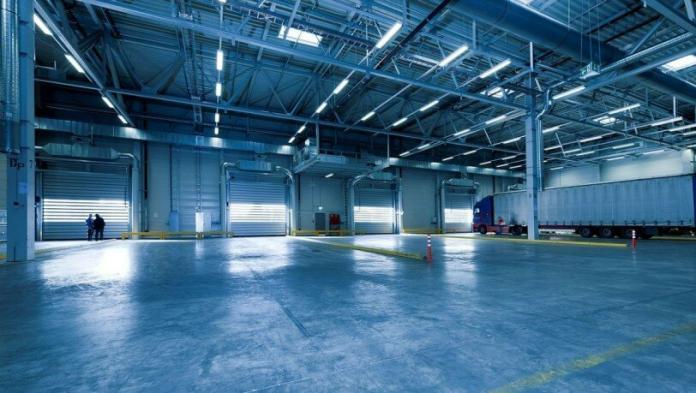Scissor lifts are versatile pieces of equipment that are commonly used in various industries, such as construction, manufacturing, and warehousing. They are designed to lift heavy loads to elevated heights, allowing workers to access hard-to-reach areas safely. However, to operate scissor lifts safely and efficiently, it’s important to understand how they work. In this article, we’ll discuss the working principle of scissor lifts, the components that make up their mechanism, the different types of scissor lifts, safety considerations, and maintenance tips to keep them in good working condition.
Components of a Scissor Lift
Scissor lifts consist of four main components: the hydraulic system, base and frame, scissor arms, and platform. The hydraulic system is responsible for powering the scissor lift, while the base and frame provide stability and support. The scissor arms are the most important part of the scissor lift mechanism, as they are what make the lift move up and down. The platform is the area where the load is placed and lifted.
The Hydraulic System
The hydraulic system is the heart of a scissor lift, as it provides the power to lift and lower the platform. It consists of a hydraulic pump, fluid reservoir, control valves, and hydraulic cylinders. The pump pressurizes the hydraulic fluid, which is then directed to the cylinders through the control valves. The cylinders use the pressurized fluid to move the scissor arms up and down, which in turn raises and lowers the platform.
The Base and Frame
The base and frame are the foundation of a scissor lift, providing stability and support for the hydraulic system and scissor arms. The base is usually made of heavy-duty steel and is designed to distribute the weight of the lift evenly. The frame, on the other hand, connects the base to the scissor arms and platform.
The Scissor Arms
The scissor arms are the most critical part of a scissor lift mechanism. They are responsible for supporting the weight of the platform and the load, as well as providing the lifting and lowering motion. The scissor arms are usually made of steel and are connected by pivot pins. When the hydraulic system pressurizes the cylinders, the scissor arms expand and contract, causing the platform to move up and down.
The Platform
The platform is the area where the load is placed and lifted. It is usually made of steel and is designed to withstand heavy loads. The platform can be customized to fit specific needs, such as adding guardrails, extensions, or other accessories.
Working Principle of Scissor Lifts
The basic mechanics behind a scissor lift involve the use of hydraulic pressure to expand and contract the scissor arms, causing the platform to move up and down. When the lift is in a lowered position, the hydraulic fluid is stored in the reservoir, and the scissor arms are in their compressed state. As the operator activates the lift, the hydraulic pump pressurizes the fluid and directs it to the cylinders, which expands the scissor arms, causing the platform to rise.
The hydraulic system is designed to maintain a constant pressure in the cylinders, keeping the platform level and stable at any height. To lower the platform, the hydraulic control valve is activated, allowing the fluid to escape from the cylinders, and the scissor arms to contract.
Types of Scissor Lifts
There are three main types of scissor lifts: hydraulic scissor lifts, pneumatic scissor lifts, and mechanical scissor lifts.
Hydraulic Scissor Lift Table
Hydraulic scissor lifts are the most commonly used type of scissor lift. They use hydraulic pressure to power the lift, making them suitable for heavy-duty applications. Hydraulic scissor lifts are available in various sizes and load capacities, making them suitable for a wide range of applications.
Pneumatic Scissor Lift
Pneumatic scissor lifts, also known as air-powered scissor lifts, use compressed air to power the lift. They are a good choice for applications that require a clean and quiet working environment, such as food processing or pharmaceutical manufacturing. Pneumatic scissor lifts are usually smaller in size and load capacity compared to hydraulic scissor lifts.
Mechanical Scissor Lift
Mechanical scissor lifts are powered by a mechanical crank or lever system, rather than a hydraulic or pneumatic system. They are a good option for applications where electricity or air pressure is not available, such as outdoor or remote locations. Mechanical scissor lifts are usually smaller and less powerful than hydraulic or pneumatic scissor lifts.
Safety Considerations
Operating a scissor lift can be hazardous if proper safety measures are not taken. Some of the hazards associated with scissor lifts include falls, electrical shock, tipping, and collision with other objects. To operate a scissor lift safely, operators must be trained and familiar with the equipment’s controls and operation.
Operators must also ensure that the lift is in good working condition before use, inspecting the hydraulic system, scissor arms, platform, and other components. The lift should also be used on a stable and level surface, with the load evenly distributed on the platform.
Maintenance and Care
Regular maintenance is crucial to keeping scissor lifts in good working condition and preventing costly repairs. Some maintenance procedures include checking the hydraulic fluid level, inspecting the cylinders and hoses for leaks, lubricating the scissor arms and pivot points, and replacing worn parts as needed.
Operators should also be trained on proper care and handling of the scissor lift, including avoiding overloading the platform, not exceeding the lift’s weight capacity, and avoiding rough or jerky movements that can damage the lift.
Conclusion
Scissor lifts are essential equipment in various industries, providing safe and efficient access to elevated work areas. Understanding the working principle of scissor lifts, the components that make up their mechanism, the different types of scissor lifts, safety considerations, and maintenance tips is vital to their safe and efficient operation. Whether using a hydraulic scissor lift table, pneumatic scissor lift, or mechanical scissor lift, proper training, maintenance, and care are crucial to ensuring the equipment’s longevity and preventing costly repairs.
You may want to read more,








